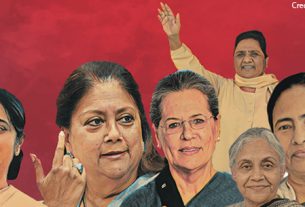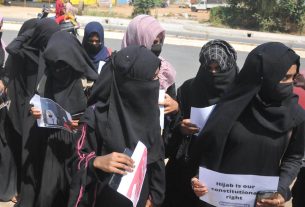Women in journalism stumble upon the toed line, writes Kashish Sharma
Poornima Makaram is an experienced photojournalist. Starting her career as Bangalore’s first woman photojournalist and probably the first in South India, she is a torch-bearer for many women of her kind. She fondly reminisces her days on the field, covering sports tournaments of all kinds.
“You name the event and I was there”, says Makram with a nostalgic laugh. Most of the days she was just a journalist doing her work. There were days, however, when she felt the limitations of reporting in a woman’s body. Covering cricket for a large span of her career, she talks about the ‘locker-room’ access, a barrier she can’t seem to overcome.
“I remember covering a cricket tournament and it was Ganguly’s birthday. Like every other journalist, I had the task of taking his pictures as he celebrated his big day. While I saw my male colleagues rushing inside the locker room and coming back with pictures of the team. I had no choice but to return empty-handed. I couldn’t make it to the locker room,” said Makaram.
Coverage of subjects continues to remain gendered despite the larger presence of women in Indian newsrooms. The study Gender Inequality in Indian Media (2019), a survey initiated by the UN Women, observes that only a few women enjoy leadership roles in the media industry. As per the report, women journalists get to contribute more to articles on culture, entertainment and lifestyle than on defence, international affairs, sports and politics.
As per the survey, women constituted 27.1 per cent of journalists and wrote 25.8 per cent of all articles in the 12 reviewed magazines in India. While women’s writings dominated women-centric magazines like the Femina, others like Frontline, Tehelka and Outlook (Hindi) had a dominating male presence. The study shows that there was not one article on science and technology written by a woman. A similar trend was observed in English news channels where over 53 per cent of the debates featured all-male panels.
Talking about the gender bias in the media landscape, Makaram narrated a few instances where celebrated cricketers blatantly refused to give an interview to women journalists and the process required the intervention of their male colleagues.
For her, being a photojournalist was always like doing any other work. It never made her feel special. The grind journalists face at the start of their career, she says, is gender-neutral. While covering challenging stories, she believes, her male colleagues were as anxious as she used to be.
Concerns around safety and late-night shifts are other discouraging factors that prevent women journalists to exercise their full potential in a newsroom.
A senior woman correspondent (unnamed) at the Hindu says, “I have always seen women journalists working hard even at late hours. It is fine till we have safe transport facilities taking us back home. I can always sense some air of concern among our seniors if we are working till late. This also requires a lot of cooperation and understanding from our families. Media doesn’t work in isolation, we too are a part of society.”
Observing the gender disparity in coverage of various subjects, the correspondent reflects on how in her entire career she never saw any male colleague covering education.
Owing to the various personal and societal pressures, she says, some women journalists go for lifestyle, health and education stories as they are much safer and easier to cover.
Comparing the gender bias in regional media versus the English media, the correspondent went on to narrate the journey of a friend who used to work in a regional media and how for 10 long years her potential was restricted to visiting press clubs and attending conferences. “She didn’t experience real journalism for 10 long years,” she exclaimed.
Irmeen Farhat Ali, principal features writer and senior copy editor at the Agra Times feel that people have for long discounted the essence of subjects like lifestyle and entertainment. She says, “Covering a war isn’t the only way to be called a successful woman journalist. Lighter subjects don’t make us look weaker. Very often we lifestyle writers are not taken as mainstream journalists which tells a lot about the skewed mindset.”
Since the beginning of her career, Ali was fascinated by feature writing. For her, these stories matter most to people and are more relatable. She uses an analogy of a wall that needs all kinds of bricks in different places to stand erect and complete.
Ali recalled her interview with the late Dr APJ Abdul Kalam and how it was a candid talk and not politically sensational.
As per an article Shattering the Glass Screen published by McKinsey & McKinsey in February 2020, while women are well represented early in the career pipeline in media, they remain a minority at the highest levels. They account for only a small per cent of C-suite positions. This suggests that only a few women journalists enjoy decision making roles in the industry.
There may be some exceptions, though.
Al Arafat Sherfuddeen, the Executive Editor at The Logical Indian on the contrary talks about the gender neutrality that marks his organization. “I have a team led by women. Two out of three editors in my organization are women. For a recruiter, all that matters is that the candidate’s profile must be in line with the job requirement. We never see them as girls or boys but only as journalists. We don’t do it under some policy, we do it instinctually.”
Whether opinion pieces written by women affect the readership, Arafat says that womens’ writings have much more sensitivity and are more human-centric. He agrees with the fact that with the advent of social media, trolling has been much harder on women journalists on virtual platforms.
For him, the leadership framework within the media is skewed and has a long way to go in terms of establishing gender equality.
Naheed Ataulla, former political editor at the Times of India has a different take on the situation. For her, work speaks louder than gender. At the end of the day, she says, it is work and sincerity that brought her recognition.

